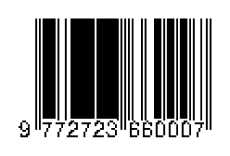Perbandingan Estimasi Parameter Metode Bayesian Self dengan Prior Vague dan Uniform Pada Model Survival Berdistribusi Rayleigh
DOI:
https://doi.org/10.59141/jiss.v2i03.209Keywords:
survival; bayesian self; vague; uniformAbstract
Analysis survival is an analysis that is used to analyze the survival time (survivaltime). The survival (survivaltime)is one of the studies used to calculate the time from symptom onset and with the advent of the incident. Inanalysis, the survival termdata is known survival , which is data that shows the time an individual can survive until an event occurs. This study aims to determine the parameter estimation of themodels survival Rayleigh distribution ofusing the Bayesian SELF method. In addition, this study will also discuss the comparison of parameter estimates for themodels survival Rayleigh distribution ofwith the Bayesian SELF method using prior Vague and Uniform. The result of parameter estimation requires information from thefunction likelihood and prior distribution which will then form the posterior distribution. The posterior distribution is the basis for obtaining a Bayesian estimate. After the estimator on the Bayesian SELF method is obtained, then the estimator will be applied to the data from the Stanford heart transplant program from October 1967 to February 1980. Based on the MSE value obtained from this study, the Bayesian SELF method with prior vague is better than the Bayesian method. SELF with Prior uniform.
Downloads
Published
How to Cite
Issue
Section
License
Copyright (c) 2021 Asri Rahmawati, Retno Budiarti

This work is licensed under a Creative Commons Attribution-ShareAlike 4.0 International License.
Authors who publish with this journal agree to the following terms:
- Authors retain copyright and grant the journal right of first publication with the work simultaneously licensed under a Creative Commons Attribution-ShareAlike 4.0 International. that allows others to share the work with an acknowledgement of the work's authorship and initial publication in this journal.
- Authors are able to enter into separate, additional contractual arrangements for the non-exclusive distribution of the journal's published version of the work (e.g., post it to an institutional repository or publish it in a book), with an acknowledgement of its initial publication in this journal.
- Authors are permitted and encouraged to post their work online (e.g., in institutional repositories or on their website) prior to and during the submission process, as it can lead to productive exchanges, as well as earlier and greater citation of published work.















